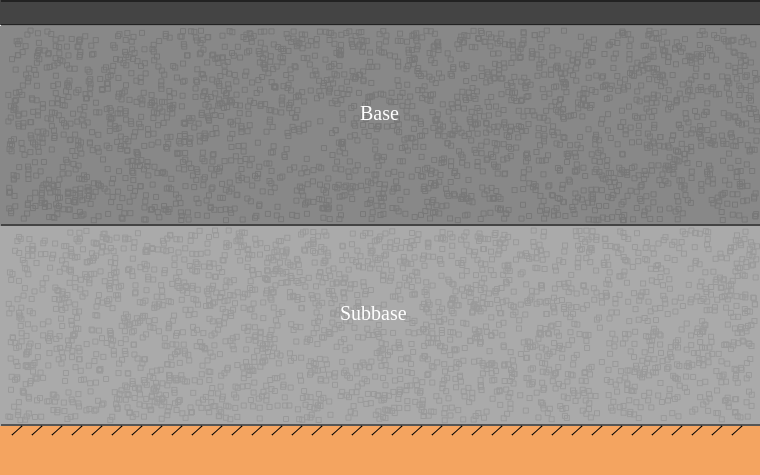The Road Pavement is the portion of the road located directly above the subgrade, and beneath any wearing surface. In urban areas it is often bordered by kerb & channel, and in rural areas by road shoulders. It is typically constructed from compacted imported material such as crushed rock. The road pavement is sometimes broken up into two components, namely the base and the sub-base.

The Glossary of Austroads Terms defines pavement as "that portion of a road designed for the support of, and to form the running surface for, vehicular traffic." and "the portion of the road, excluding shoulders, placed above the design subgrade level for the support of, and to form a running surface for vehicular traffic."
There are two main types of road pavements; flexible pavements & rigid pavements
The useful life of a road pavement will depend on a number of factors including soil conditions, the material it is made from, its thickness, its surface type and climate.
The table below shows the useful life for road pavements adopted by a number of Councils.
| Council | Adopted Life |
|---|---|
| Albury City Council | 75 years |
| Banyule City Council | 100 years |
| Bundaberg Regional Council | 80 years |
| Camden Council | 70 years |
| Campbelltown City Council | 100 years |
| Corowa Shire Council | 80 years |
| Darebin City Council | 120 years |
| Hume City Council | 75 years |
| Indigo Shire Council | 75 years |
| Infrastructure Asset Useful Lives Report | 20-100 years |
| Loddon Shire Council | 90 years |
| Randwick City Council | 60 years |
| Whittlesea City Council | 120 years |
| Wollondilly Shire Council | 80 years |
| National Asset Management Manual | 50-100 years |